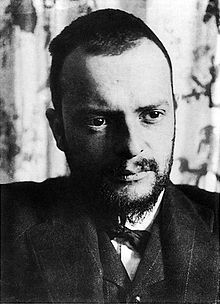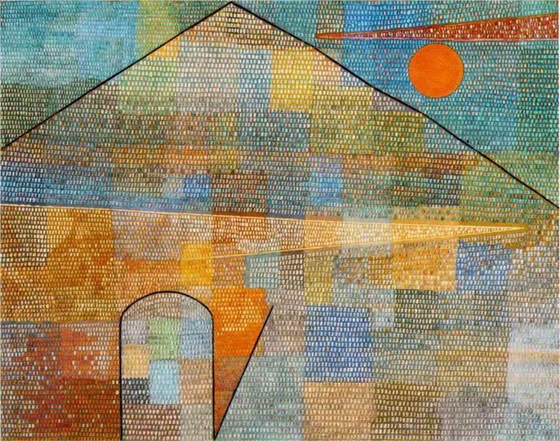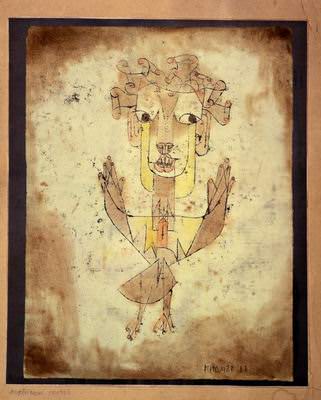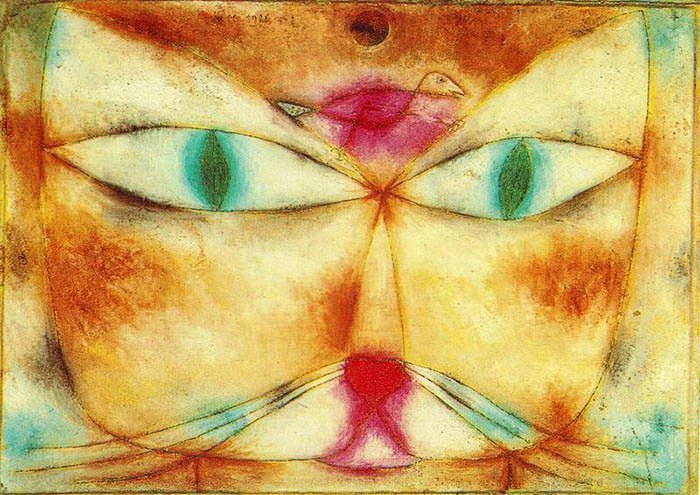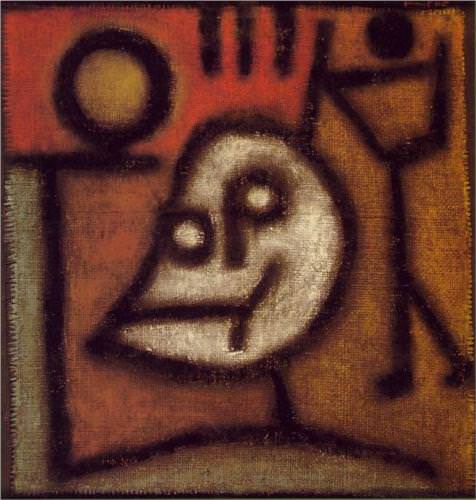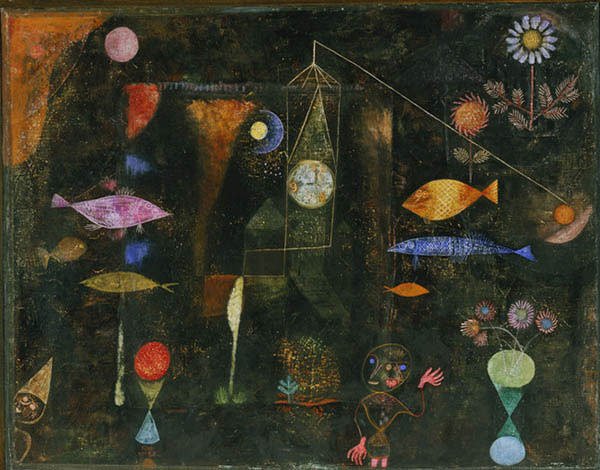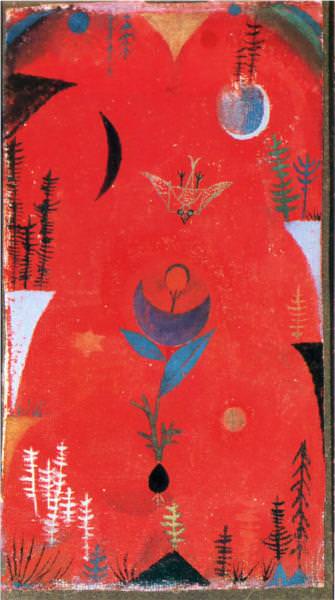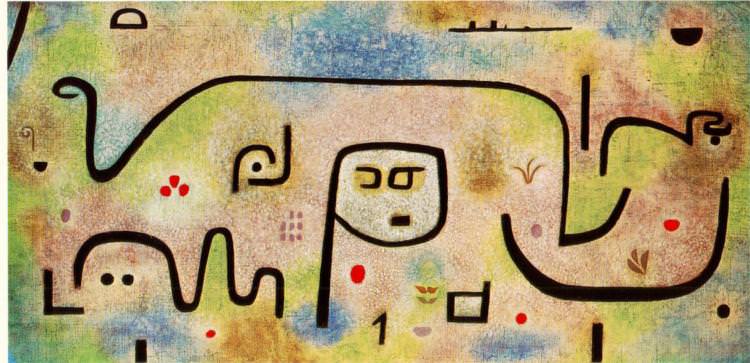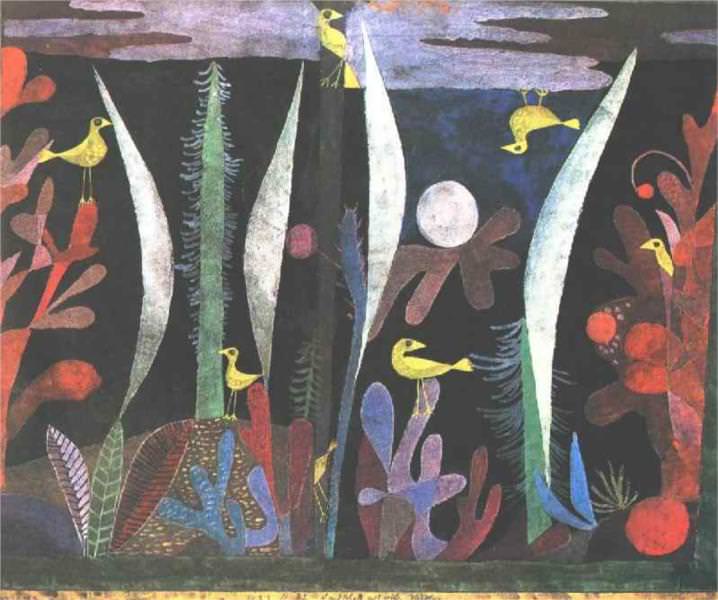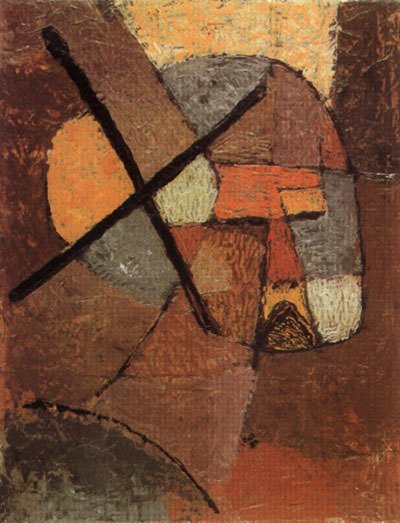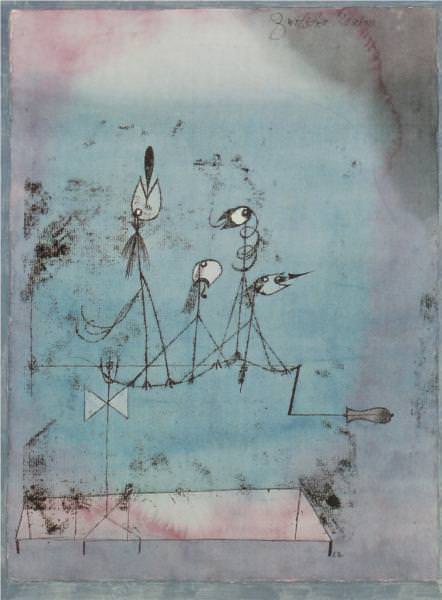- Overview
-
Paul Klee was a Swiss German artist. His highly individual style was influenced by movements in art that included Expressionism, Cubism, and Surrealism. Klee was a natural draftsman who experimented with and eventually deeply explored color theory, writing about it extensively; his lectures Writings on Form and Design Theory (Schriften zur Form und Gestaltungslehre), published in English as the Paul Klee Notebooks, are held to be as important for modern art as Leonardo da Vinci's A Treatise on Painting for the Renaissance. He and his colleague, Russian painter Wassily Kandinsky, both taught at the Bauhaus school of art, design and architecture. His works reflect his dry humor and his sometimes childlike perspective, his personal moods and beliefs, and his musicality.
- Career
-
- He started developing some experimental techniques during the 1900s, including etching and drawing with a needle on a blackened pane of glass. From 1903 to 1905 he worked on a series of etchings called ‘Inventions’ in which he illustrated several grotesque characters. During this time he was also playing violin in an orchestra and writing concert reviews.
- His work reached a new level of maturity during the World War I. Several of his friends including Auguste Macke and Franz Marc were killed and this deeply affected Klee. He made many pen-and-ink lithographs, including ‘Death for the Idea’, in response to these losses.
- He joined the German army in 1916, restoring aircraft camouflage and working as a clerk. He also continued to paint during the entire war and also managed to exhibit in several shows. He became very popular by 1917 and was hailed as the best of the new German artists.
- In 1919 he secured a three-year contract with dealer Hans Goltz, whose influential gallery gave Klee major exposure as well as commercial success. He also held a retrospective of over 300 works in 1920.
- In 1920, Walter Gropius invited Klee to join the faculty of the Bauhaus, a school of architecture and industrial design. He accepted this post and started teaching in January 1921. His friend Kandinsky joined the staff the next year, and the two men formed the Blue Four with two other artists, Alexej von Jawlensky and Lyonel Feininger, and toured the United States to lecture and exhibit work.
- Klee began teaching at Dusseldorf Academy in 1931. However, he was fired under Nazi rule in 1933 and moved with his family to Switzerland. He was at the peak of his career at this time. He soon started suffered from ill health and his output dropped considerably even though he continued painting until his last years.
- He started developing some experimental techniques during the 1900s, including etching and drawing with a needle on a blackened pane of glass. From 1903 to 1905 he worked on a series of etchings called ‘Inventions’ in which he illustrated several grotesque characters. During this time he was also playing violin in an orchestra and writing concert reviews.
- Legacy
-
"Klee's act is very prestigious. In a minimum of one line he can reveal his wisdom. He is everything; profound, gentle and many more of the good things, and this because: he is innovative", wrote Oskar Schlemmer, Klee's future artist colleague at the Bauhaus, in his September 1916 diary.
When Klee visited the Paris surrealism exhibition in 1925, Max Ernst was impressed by his work. His partially morbid motifs appealed to the surrealists. André Breton helped to develop the surrealism and renamed Klee's 1912 painting Zimmerperspektive mit Einwohnern (Room Perspective with People) to chambre spirit in a catalogue.
The art of mentally ill people inspired Klee as well as Kandinsky and Max Ernst, after Hans Prinzhorns book Bildnerei der Geisteskranken (Artistry of the Mentally Ill) was published in 1922. In 1937, some papers from Prinzhorn's anthology were presented at the National Socialist propaganda exhibition "Entartete Kunst" in Munich, with the purpose of defaming the works of Kirchner, Klee, Nolde and other artists by likening them to the works of the insane.
Klee's work has influenced composers including Argentinian Roberto García Morillo in 1943, with Tres pinturas de Paul Klee, and the American artist David Diamond in 1958, with the four-part Opus Welt von Paul Klee (World of Paul Klee). Gunther Schuller composed Seven Studies on Themes of Paul Klee in the years 1959/60, consisting of Antique Harmonies, Abstract Trio, Little Blue Devil, Twittering Machine, Arab Village, An Eerie Moment, and Pastorale.
Since 1995, the "Paul Klee-Archiv" (Paul Klee archive) of the University of Jena houses an extensive collection of works by Klee. It is located within the art history department, established by Franz-Joachim Verspohl. It encompasses the private library of book collector Rolf Sauerwein which contains nearly 700 works from 30 years composed of monographs about Klee, exhibition catalogues, extensive secondary literature as well as originally illustrated issues, a postcard and a signed photography portrait of Klee.
- On View
-
- Museum of Modern Art, New York City
- Art Institute of Chicago
- Philadelphia Museum of Art
- San Francisco Museum of Modern Art
- The Phillips Collection, Washington D.C.
- Beyeler Foundation, Riehen
- Kunstmuseum Basel, Basel
- Kunsthalle Hamburg, Hamburg
- Tate Modern, London
- Lenbachhaus, Munich
- Museum of Fine Arts, Houston
- Sprengel Museum, Hanover
- Zentrum Paul Klee, Bern
- Kunsthaus Zurich, Zurich
- Nelson-Atkins Museum of Art, Kansas City
- Israel Museum, Jerusalem
- Minneapolis Institute of Art, Minneapolis
- Stadel Museum, Frankfurt
- Thyssen-Bornemisza Museum, Madrid
- Kupferstichkabinett Berlin, Berlin
- Museum Kunstpalast, Dusseldorf
- Solomon R. Guggenheim Museum, New York City

